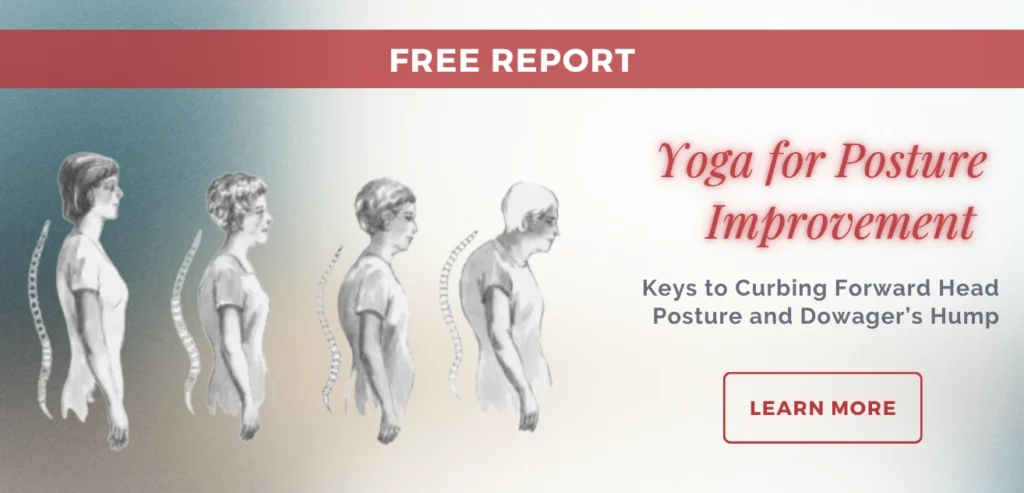Struggle with Tight Hamstrings? Take This 60 Second Hamstring Test to See How You Stack Up

Struggling with tight hammies? You are not alone. Tight hamstrings affect a surprising number of people – as many as 7 out of 10 by some research estimates. And unless we regularly stretch our hamstrings, the problem only tends to get worse with age.
Tight hamstrings may seem like simply an innocuous nuisance. But what most people don’t realize is that tight hamstrings don’t just affect your ability to touch your toes. They create a domino effect throughout your entire body, affecting your posture, your spine, and even your risk of chronic low back pain.
The Hidden Link Between Hamstrings and Posture
The hamstrings are a group of three muscles running along the back of your thigh, attaching at one end to your sitting bones (ischial tuberosity) and at the other end to the bones just below your knee. Think of them as a band connecting your pelvis to your lower legs.
When these muscles are tight, they pull your pelvis into a backward tilt, which sets off a cascade of compensations up your spine.
“Tight hamstrings tend to flatten the lower back, causing people to lose the normal curve of the lumbar spine,” explains Julie Gudmestad, a renowned physical therapist and veteran yoga teacher.
Here’s what happens: Your tight hamstrings pull your pelvis backward, which flattens your natural lumbar curve. To compensate for this flattening in your lower back, your body typically rounds your upper back (thoracic spine) even more. To keep your eyes looking forward instead of at the ground, your head then has to jut forward.
The result? Forward head posture—one of the most common postural problems today.
“When the hamstrings are tight, it tends to lock the pelvis, so it doesn’t move as freely,” says Gudmestad. “As a result, many yoga practitioners end up overworking their low back.”
This affects far more than just yoga poses. Tight hamstrings limit the movement of your pelvis in relation to your legs in everyday activities—walking, sitting, bending, and standing. You can’t achieve proper alignment in many movements when your pelvis is being pulled backward by unyielding hamstrings.
The Connection to Lower Back Pain
The postural distortions caused by tight hamstrings don’t just affect how you look—they directly contribute to pain and injury.
When your hamstrings pull your pelvis into a backward tilt and flatten your lumbar curve, you lose the natural shock-absorbing quality of your spine. Your vertebrae are designed to be stacked with specific curves that distribute forces efficiently. When you lose these curves, the forces of daily movement—walking, sitting, standing—are distributed differently, often creating excessive stress on spinal discs, ligaments, and muscles.
“That’s a big contributor to lower back pain and lower back injuries,” Gudmestad notes about the loss of normal lumbar curve caused by tight hamstrings.
Many people with chronic lower back pain have tried everything—strengthening exercises, stretching their back muscles, adjusting their chair height—without addressing the root cause: tight hamstrings that are fundamentally altering their spinal mechanics.
People with very tight hamstrings also struggle to sit with proper alignment in simple positions, whether on the floor or in a chair. The hamstrings pull the pelvis into a backward tilt, rounding and putting strain on the lower back. Over time, this sustained strain can lead to chronic discomfort and even structural changes.
How Tight Are Your Hamstrings? Take This 60-Second Hamstring Test
So how do you know if your hamstrings are tight? Here’s a simple test you can do right now:
The Test:
- Lie on your back with both legs stretched out straight, arms by your sides
- Raise your right leg toward the ceiling, keeping your foot gently flexed
- Keep your left leg straight on the floor (don’t let the knee bend)
- Observe the angle your raised leg makes with the floor
Interpreting Your Results:
Normal flexibility: Your raised leg reaches straight up toward the ceiling (90 degrees or slightly more), with the sole of your foot facing the ceiling.
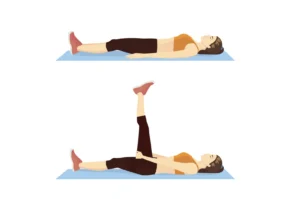
Very flexible: Your leg reaches past vertical, toward your face and upper torso. (Note: If you’re very flexible, you may need to focus on strengthening and stability rather than more stretching.)
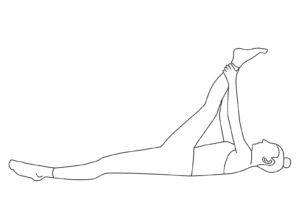
Tight hamstrings: Your raised leg forms less than a 90-degree angle to the floor—perhaps 60 degrees, 45 degrees, or even 30 degrees in relation to the floor. The further your leg is from 90 degrees, the tighter your hamstrings.
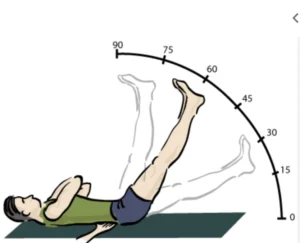
Try this variation: If your hamstrings are tight, bend your left knee and place your left foot on the floor, then raise your right leg again toward the ceiling. You’ll notice your right leg can now reach further up. This happens because your pelvic bowl tilts slightly back when you bend one knee, shortening the distance between the hamstring attachments and giving you a bit more slack.
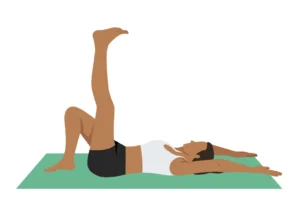
Be sure to test both legs, as many people are more flexible on one side than the other.
What Your Results Mean
If your test revealed tight hamstrings, you’re not alone—and more importantly, it’s changeable. Understanding the connection between your hamstrings and both your posture and your back pain is the first step.
The hamstrings contain a lot of connective tissue, and as we get older, they tend to get tough and less flexible faster than other muscles in the body. The good news is that with consistent, intelligent stretching, you can restore flexibility to your hamstrings and potentially resolve both postural distortions and chronic back pain in the process.
“When speaking about the hamstrings, we’re talking as if we’re just stretching one muscle group, but the body doesn’t function according to just one muscle or muscle group,” says yoga teacher and author Doug Keller. “The whole body is influenced by whatever happens in one part of the body. So, stretching the hamstrings is not just for the benefit of your legs, it’s really for the benefit of your whole body.”
The key to safe hamstring stretching is to never push, and to hold stretches for two to three minutes to give the tough connective tissue in the hamstrings time to begin opening up. Poses like Supta Padangusthasana (Reclining Hand-to-Big-Toe Pose) are excellent for this purpose when done with proper support and alignment. (See Julie Gudmestad’s standing variation of this pose in the top article image).
As you work on opening your hamstrings, you may discover surprising benefits beyond greater ease in yoga poses. Many people hold stress and tension in the deep muscles of the legs, and stretching them can be a great way to release that stress. Over time, you might notice that nagging low back pain slowly fading away, or that your standing posture feels more naturally upright and effortless.
Remember: Opening your hamstrings is a journey and exploration with its own surprises and blessings. Be patient with yourself, work consistently, and trust the process.
This article draws on insights from Julie Gudmestad, PT, yoga teacher and founder of Gudmestad Yoga, and Doug Keller, author of Yoga as Therapy.
Also, read...
Discovering the Living Body: A Yoga Teacher’s Revolutionary Insight on Fascia
The Fascia Connection: Tom Myers on How Postural Habits Get Locked into Our Fascial System
Axial Extension for Better Posture- Learning to Lengthen the Torso in Forward Bends
Related courses

Eva Norlyk Smith, Ph.D., C-IAYT, is the founder and President of YogaUOnline. She is a lead trainer in YogaUOnline’s Yoga Wellness Educator program, an RYT-300 Yoga Alliance-approved training that focuses on giving teachers the skills they need to offer wellness courses and work with older beginners.
Eva is a trained yoga therapist at the 1,000-hour level as well as a trained bodyworker at the 500-hour level. She is the co-author of several books, including Light Years Younger with Dr. David J. Goldberg.


